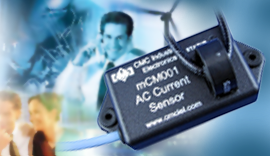Current Sensing TCR Resistors
Vishay Foil powers current-sensing TCR resistors were developed with a low absolute TCR and Kelvin connection to meet demands for new and stable resistive product solutions in the industry today. These resistors are most-often used to monitor a current that is directly proportional to some physical characteristic (such as pressure, weight, etc.) being measured by an analog sensor.
The TCR resistors converts the current to a voltage that is representative of the physical characteristic and feeds that voltage into control circuits, instrumentation, or other indicators.

Deviations induced in the resistor, not representative of the monitored characteristic, can be caused by high absolute TCR response to both ambient temperature and selfheating and can feed erroneous signals into the system.Resistance is usually kept low to reduce the self-heating (Joule effect) portion of the error while minimizing the stresses that cause long-term resistance changes. It is critical for this resistor to reach thermal equilibrium quickly in circuits that require fast response or where the current changes quickly. Thermal EMF is another important consideration in low ohmic current sensing resistors used mostly in DC circuits (there is no effect in AC circuitry). Vishay Foil resistors are able to minimize this effect through the use of appropriate materials between the resistive layer and the terminations
Key Benefits
● Temperature Coefficient of Resistance (TCR):
❍ ±0.05 ppm/ºC (0ºC to +60ºC) typical with Z-Foil
❍ ±0.2 ppm/ºC (-55ºC to +125ºC, +25ºC ref.) typical with Z-Foil
● Power Coefficient (PCR) “∆R due to self heating”: 4 ppm/W or 5 ppm at rated power
● Resistance tolerance: absolute ±0.01%
● Power rating: up to 10 W on heat sink
● Current noise: 0.010 μVRMS/V of applied voltage (<-40 dB)
● 4 terminal (Kelvin) connections for high accuracy
● Vishay Foil resistors are not restricted to standard values; specific “as required” values can be supplied at no extra cost or delivery (e.g. 1K2345 vs. 1K)
● Load life stability: to ±0.005% at +25ºC, 2000 hours, at rated power
● Rise time: 1 ns without ringing
● Thermal stabilization time <1s (nominal value achieved within 10 ppm of steady-state value





















